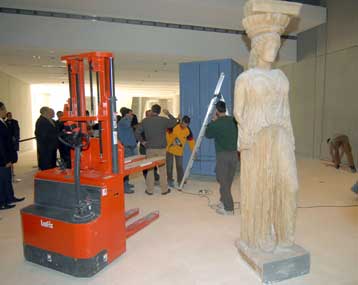In an earlier post (
Bad Science!!!!), I mentioned the "new" decipherment of the middle section (i.e. the one written in Demotic) of the Rosetta Stone. The study, which was undertaken by Professors Boshevski and Tentov from the Former Yugoslav Republic of Macedonia (FYROM), has tried to prove that the text was actually written in "Macedonian", the language of the then rulers of Egypt (i.e. the Ptolemies).
Although I don't wish to go into detail about the numerous shortcomings and flaws of the methods and techniques used in the so-called decipherment, I would like to make a simple point which immediately debunks their argument. The two aforementioned scholars seem to not know that the Demotic script was in use from ca. 650 BCE down to the third century AD, something that clearly shows that it wasn't used exclusively by the Ptolemies.
Of course, no mainstream archaeologists or ancient historians have taken the new decipherment seriously. The whole endeavour is just another attempt by FYROM scholars and politicians to construct a new national identity, an identity connected to Alexander the Great and his legacy.
In a similar tone, another study has recently claimed that mythical Orpheus was also "Macedonian"! For more info on that, take a look at
Focus-Fen.
I wonder what's next...






